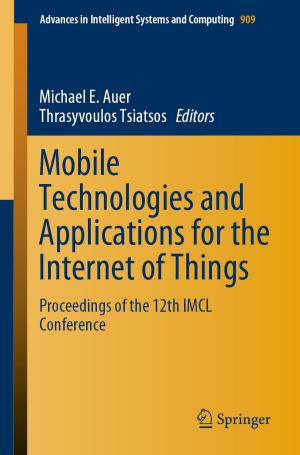| Author: | ISBN: | 9783319765563 | |
| Publisher: | Springer International Publishing | Publication: | June 13, 2018 |
| Imprint: | Springer | Language: | English |
| Author: | |
| ISBN: | 9783319765563 |
| Publisher: | Springer International Publishing |
| Publication: | June 13, 2018 |
| Imprint: | Springer |
| Language: | English |
This book provides a comprehensive overview of the photonic sensing field by covering plasmonics, photonic crystal, and SOI techniques from theory to real sensing applications. A literature review of ultra-sensitive photonic sensors, including their design and application in industry, makes this a self-contained and comprehensive resource for different types of sensors, with high value to the biosensor sector in particular. The book is organized into four parts: Part I covers the basic theory of wave propagation, basic principles of sensing, surface plasmon resonance, and silicon photonics; Part II details the computational modeling techniques for the analysis and prediction of photonic sensors; Part III and Part IV cover the various mechanisms and light matter interaction scenarios behind the design of photonic sensors including photonic crystal fiber sensors and SOI sensors. This book is appropriate for academics and researchers specializing in photonic sensors; graduate students in the early and intermediate stages working in the areas of photonics, sensors, biophysics, and biomedical engineering; and to biomedical, environmental, and chemical engineers.
This book provides a comprehensive overview of the photonic sensing field by covering plasmonics, photonic crystal, and SOI techniques from theory to real sensing applications. A literature review of ultra-sensitive photonic sensors, including their design and application in industry, makes this a self-contained and comprehensive resource for different types of sensors, with high value to the biosensor sector in particular. The book is organized into four parts: Part I covers the basic theory of wave propagation, basic principles of sensing, surface plasmon resonance, and silicon photonics; Part II details the computational modeling techniques for the analysis and prediction of photonic sensors; Part III and Part IV cover the various mechanisms and light matter interaction scenarios behind the design of photonic sensors including photonic crystal fiber sensors and SOI sensors. This book is appropriate for academics and researchers specializing in photonic sensors; graduate students in the early and intermediate stages working in the areas of photonics, sensors, biophysics, and biomedical engineering; and to biomedical, environmental, and chemical engineers.















